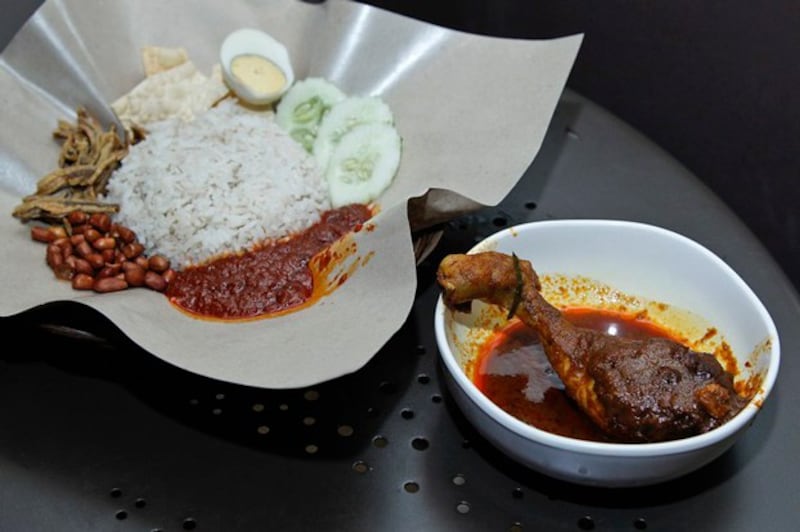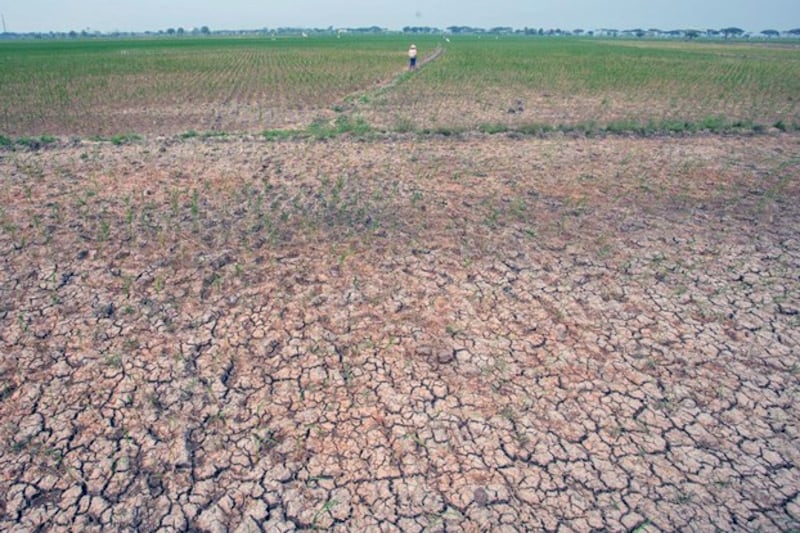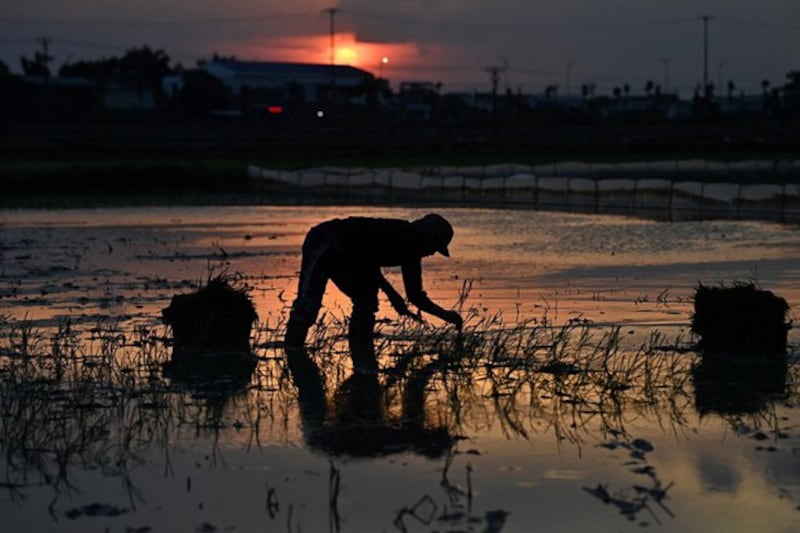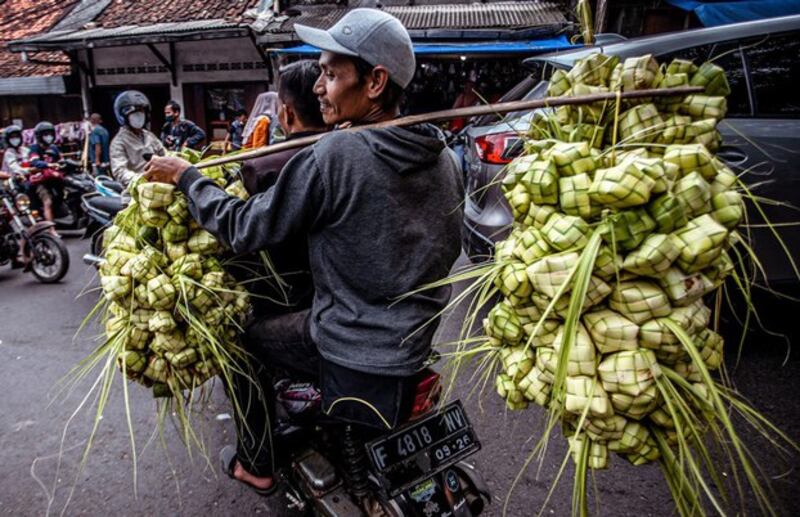UPDATED at 2:53 pm, Sept. 29, 2023.
In many Southeast Asian languages the word “eat” is used to mean “to eat rice.”
The grain provides 50% to 70% of the calorie intake for Southeast Asia’s people and the region accounts for 30% of the world’s rice harvest.
But the staple food is becoming out of reach for tens of millions of people in Southeast Asia as rice prices have shot up more than 40% since late 2022. The increase is blamed on top exporter India banning selling outside the country and the El Niño climate phenomenon reducing harvests.
The price spiral could lead to a grave food security problem if it continues, said Joseph Glauber, a senior fellow at the International Food Policy Research Institute in Washington.
“In countries where rice plays such an important role in total caloric consumption – and there’s a lot of them in South Asia and Southeast Asia, there’s a real crisis if rice prices were to double or triple, from a food security standpoint,” Glauber told BenarNews.
At one point in August, India’s ban on non-basmati rice exports starting July 20 caused the price of Thai white 5% broken rice, an Asian benchmark, to shoot up to its highest level in 15 years – to more than US$650 a ton, or 50% higher than $400 at the end of November.

Prices have retreated a bit since August, but in six months to a year will go up to US$700 to $750 a ton at least, one U.S. analyst told BenarNews, adding that more stressors could see the cost topping at $1,000 a ton.
Meanwhile, the full effects of El Niño, with its extreme weather patterns, won’t be seen until the end of the year or early 2024, many said.
“Even if production is down just 5% to 10% it will raise prices, because that is a lot of volume we are talking about,” Glauber said.
Already, Filipina Marie Angie Taalic, 29, a single mother in Manila who works as a maid and lives in a slum with 10 relatives, has had to cut her family’s meals to one a day.
“Rice prices have really skyrocketed so that we can barely afford it anymore,” she told BenarNews.
“Where we used to eat three square meals a day, now we only eat once – sometimes before noon or a little after that, a late lunch.”

India export ban blamed
Rice inflation in the Philippines increased to 8.7% in August from 4.2% in July.
To combat the hikes, Philippine President Ferdinand Marcos Jr. on Sept. 1 imposed a freeze on the prices of regular and well-milled rice at 41 pesos and 45 pesos (72 and 79 cents) per kilogram, respectively.
The Philippines should have been unaffected by the ban because it imports rice mainly from Vietnam, which in 2022-2023 accounted for 90% of imports.
But because of India’s ban, global importers shifted to the next largest suppliers, Thailand and Vietnam, “sending their export quotes surging to the highest levels since 2008,” the USDA said in its September “Grain: World Markets and Trade” report.
The price of rice exported from Thailand and Vietnam shot up a whopping 20% since India’s ban, Reuters news agency reported Aug. 31.
And with the specter of El Niño hanging over Southeast Asia, rice output in the region may decline further, which could make the grain even more expensive.
El Niño patterns, which are associated with drier-than-usual conditions across most of Southeast Asia, have over the past three decades either coincided with or directly preceded periods of rice price inflation, according to a commentary by BMI, a Fitch Solutions company.

Already, record-breaking temperatures have pummeled Southeast Asia’s crops, with the price of rice going up even in bountiful Thailand, to 14.5 to 16 baht per kg in August, from 13 to 14.5 baht last year at the same time.
In countries such as Vietnam and Thailand, which are major producers, lower rice yields hit paddy farmers hard.
Pairat Puritang, a farmer in Thailand’s Khon Kaen province, owns four acres of paddy field, and told BenarNews he wasn’t sure he would break even this year.
“Climate change renders us unable to predict the rain fall and control the costs,” he said.
“I had to plant seeds twice this year because of drought.”
And El Niño’s full effects haven’t been felt yet.
It could be considered “very strong” toward the end of this year, wrote Elyssa Ludher and Paul Teng of the Climate Change in Southeast Asia Program at Singapore’s ISEAS-Yusof Ishak Institute.
"With warmer temperatures typically following drier periods, droughts and heat waves may become more common, depending on the intensity of the El Niño event," they said in an article for the institute.
“Major rice cultivation zones all fall within the areas likely affecting winter and spring paddy seasons,” the authors wrote.
“It is thus anticipated that rice production, particularly winter and spring rice production, will decline as a result of El Niño.”

Drought caused by the phenomenon is expected to reduce rice yields in Thailand by 5.6% to 6% from last year, according to the Rice Department and Kasikorn Research Center. That decline translates to a reduced rice output of 25.1 million to 25.6 million tons.
Production could go even lower, depending on the severity of El Niño, a Kasikorn report said.
Next six weeks ‘crucial’
Peter Timmer, a professor emeritus at Harvard University, advises on food policy and agriculture development with a specialization in rice price stabilization. Since the 1970s, he has worked with the Southeast Asian region’s governments of Indonesia, Malaysia, the Philippines and Vietnam.
Timmer told BenarNews that the rice situation may become a bit clearer after the next six weeks, a period he called “crucial.”
“By then, we will learn how Indonesia and the Philippines are getting through the rice price crisis,” he said.
“By then we will also know if El Niño’s effects drag on, which could lead to a prolonged and deeper shortage.”
Glauber, of the International Food Policy Research Institute, said the coming six weeks would, by extension, also give an indication of what big rice producers such as Thailand and Vietnam are planning.
“In the next six weeks we will see if it is a good situation, that is, a mild El Niño, a normal monsoon season or one that ends early,” he said.
“What I hope does not happen is additional actions like India’s from Thailand and Vietnam. That could see some very large price hikes.”
Countries such as Indonesia, Southeast Asia’s most populous country, and its neighbor Malaysia, which produce rice but also import because they aren’t self-sufficient, have been hit by both El Niño-caused output shortages and India’s export ban.
As of September, the cost of rice in Indonesia was 16% higher than during the same month in 2022.

Annah, 38, a housewife in Sukabumi, a regency in West Java, has cut down on protein for her extended family of six. Her husband, a casual laborer, installs light steel roofs and doesn’t always have work.
“We can’t replace rice with other foods, because rice is our staple food. We can’t reduce our consumption either,” Annah, who goes by a single name, told BenarNews.
In neighboring Malaysia, where 70% of rice supply in a year is grown domestically, people are having trouble finding local rice.
Ismail Salleh, chairman of the MADA, a Malaysian federal body overseeing planting countrywide, told BenarNews that local rice production had not suffered because of extreme weather phenomena.
And yet, local rice is not available on supermarkets’ shelves.
Mohamad Sabu, Malaysia’s agriculture and food security minister, acknowledged there was a shortage of local rice, but blamed it on hoarding by consumers who saw imported rice prices had gone up 36%.
“Shortage of local white rice supply in the market nationwide occurred due to panic buying as consumers switched to local white rice following the price hike of imported rice,” Sabu told BenarNews.

But Shahardi Abdullah, a paddy farmer in Malaysia’s Perlis state, told a different story, suggesting El Niño conditions had affected his harvest.
“It is already September, and I have yet to harvest the paddy, which is usually done in August. We were two months late due to a prolonged dry spell which lasted until June,” he told BenarNews.
“Usually, I could produce two tons of grains during every harvest, and earn about 2,500 ringgit (US$532), however I am not too sure this time around … it might be less than it used to be.”
Rice is ‘food of the poor’
Before the COVID pandemic, in 2018, a little more than 73 million people, or 11% of the nearly 654 million population in the Association of Southeast Asian Nations (ASEAN) members were living in abject poverty, according to Oxfam, an international poverty alleviation group.
That 73 million does not include people who may be above the poverty line but are economically weak, because the World Bank defines people falling below the poverty line as living on $2.15 per person per day. And millions more joined those ranks during and after the pandemic as economies struggled to recover.
With such numbers, rice inflation in Southeast Asia could lead to grave food security problems because not only is it the region’s staple food, it is also what the poor rely on for sustenance, Harvard’s Timmer said.
“Rice is the food of the poor in Asia and in Africa. An increase in rice prices will lead to widespread hunger,” he said.
“Even if 10% of ASEAN’s population was poor, we are talking about serious problems … pretty significant hunger.”
BenarNews is an RFA-affiliated online news organization.
Nontarat Phaicharoen in Bangk ok, Tria Dianti in Jakarta, Ili Shazwani and Muzliza Mustafa in Kuala Lumpur and Jojo Riñoza in Manila, contributed to this report.
Updates to recast lead slightly.
